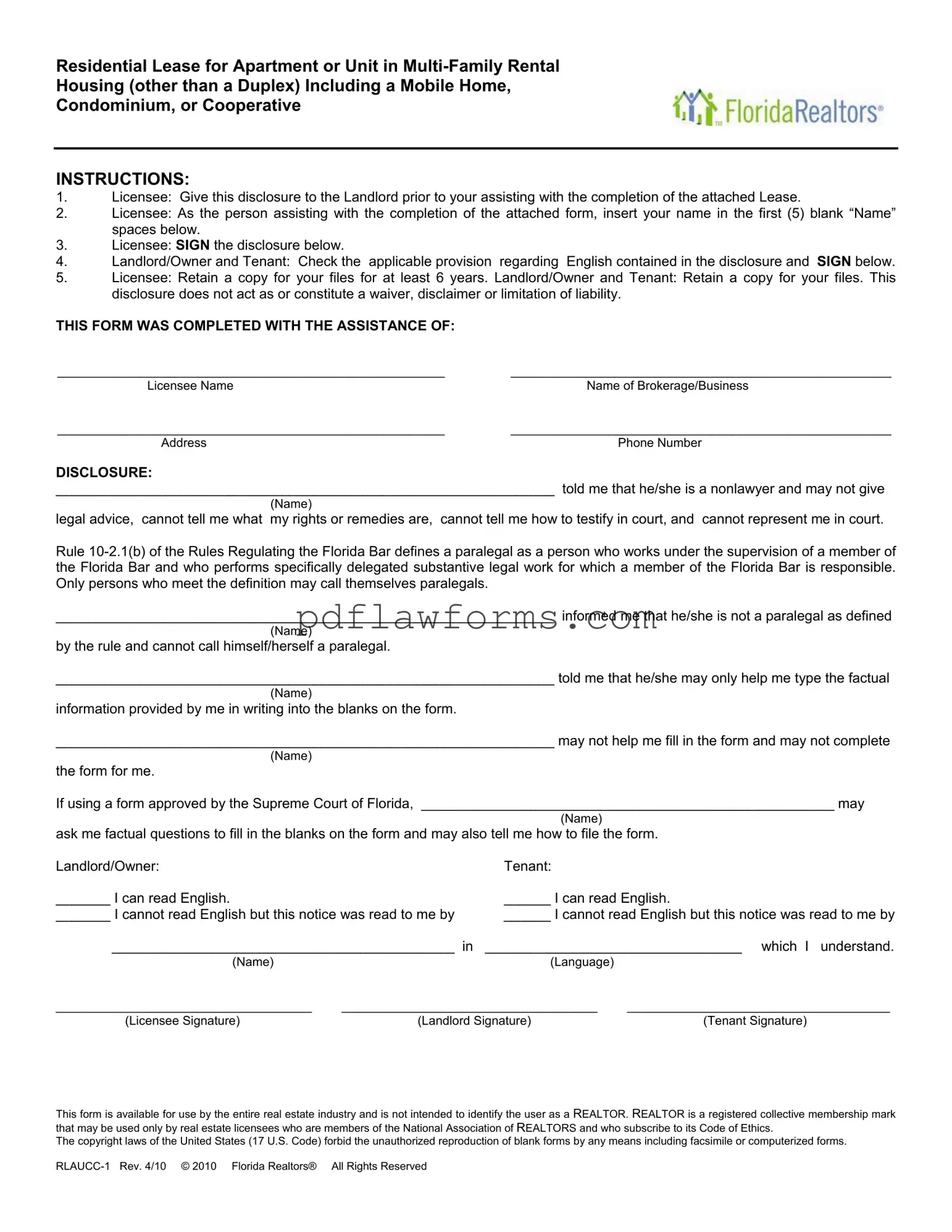Filling out the Florida Realtors Residential Lease form can be a straightforward process, but many people make common mistakes that can lead to confusion and complications later on. One of the most frequent errors is leaving blank spaces in critical sections. For instance, if the lease term or rental amount is not filled in, it can lead to misunderstandings about the duration of the lease or how much rent is due. Always ensure that every blank space is completed to avoid any ambiguity.
Another common mistake is neglecting to provide accurate contact information. Both landlords and tenants should take care to include their correct email addresses and phone numbers. This information is essential for effective communication throughout the lease term. If either party needs to reach out regarding repairs or payments, having the right contact details can make all the difference.
People often overlook the importance of reading the lease thoroughly before signing. The document imposes legal obligations, and failing to understand these can lead to unintentional breaches. Take the time to read each section carefully, paying attention to terms regarding deposits, maintenance responsibilities, and rules about pets or smoking. Being informed helps avoid disputes down the line.
Additionally, many individuals forget to check the provisions regarding the use of the premises. The lease specifies that the property should only be used for residential purposes. If tenants plan to run a business or host frequent gatherings, they must ensure that such activities comply with the lease terms. Ignoring this could result in penalties or even eviction.
Security deposits are another area where mistakes often occur. Some tenants may not realize that they need to specify the amount and terms of the deposit in the lease. Without this information, disputes can arise about how much money was collected and what it covers. It’s crucial to clarify these details upfront to avoid misunderstandings later.
Moreover, tenants sometimes fail to recognize the significance of maintenance responsibilities outlined in the lease. The form specifies who is responsible for various maintenance tasks, and neglecting to fill this out can lead to disagreements over who should handle repairs. Clearly defining these responsibilities can save both parties time and frustration.
Finally, many people forget to retain copies of the lease and any related documents. Keeping a signed copy for personal records is vital, as it serves as a reference point for both landlords and tenants. If any disputes arise, having documentation can provide clarity and support claims made by either party.
By being aware of these common pitfalls and taking the time to fill out the Florida Realtors Residential Lease form carefully, both landlords and tenants can set the stage for a successful rental experience. Attention to detail and clear communication are key to avoiding issues and ensuring a smooth leasing process.
